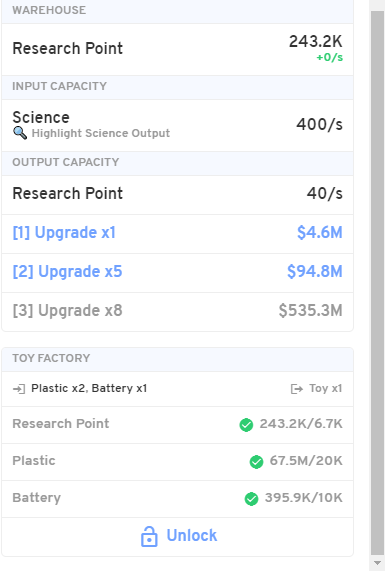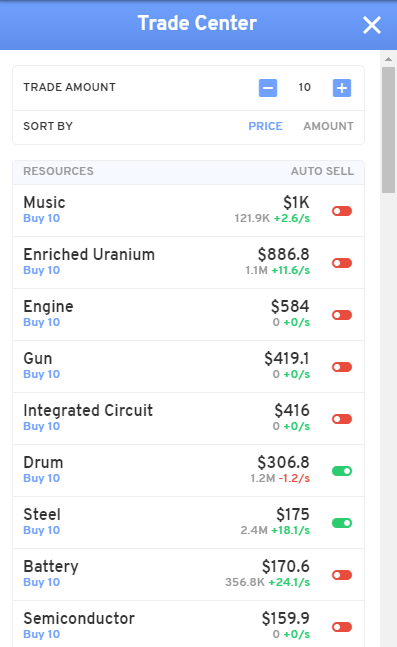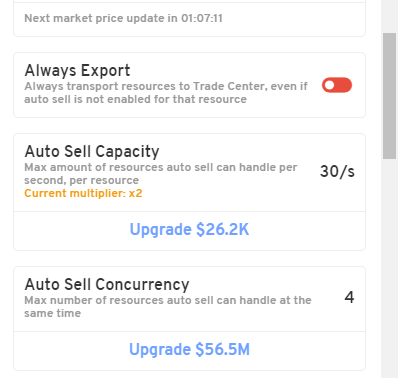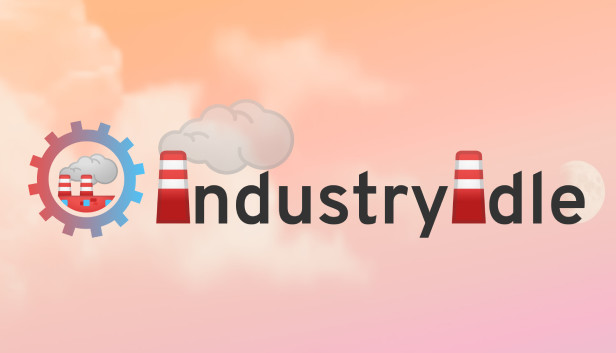A guide containing step by step instructions for the basics of starting a new city. Early structure and goal priority, description of the core mechanics and how they function, for people who started playing and feel lost. Not maximally optimal or extending into the middle or late stages of a city, but instead a solid and consistent way to get started so you don’t have to reset early while you master the mechanics of the game.
Introduction
Step 1: Power
The first thing you need to do is start generating power. But for now you have no resources to fuel power plants, so you need to rely on the bounty of nature. You want to start by creating a few Solar Panel or Wind Turbine to generate some Power.
![]() Solar Panels generate more Power than Wind Turbines do per cycle, but they have only a 50% uptime, to simulate the day/night cycle. Because all Solar Panels are on the same cycle, they create a 5 seconds on / 5 seconds off power curve which can make getting your first few buildings off the ground a little more complicated, but you would need fewer of them to generate enough power for the next step. A personal preference.
Solar Panels generate more Power than Wind Turbines do per cycle, but they have only a 50% uptime, to simulate the day/night cycle. Because all Solar Panels are on the same cycle, they create a 5 seconds on / 5 seconds off power curve which can make getting your first few buildings off the ground a little more complicated, but you would need fewer of them to generate enough power for the next step. A personal preference.
![]() Wind Turbines generate power on an 80% uptime cycle, but importantly, each Turbine’s cycle is based on the square it is located on, so they’re not on the same cycle as other Turbines. Since they produce less total Power, it can be a slower started to move on to step 2, but you don’t have 5 seconds of zero power at all. I prefer Wind, but either works.
Wind Turbines generate power on an 80% uptime cycle, but importantly, each Turbine’s cycle is based on the square it is located on, so they’re not on the same cycle as other Turbines. Since they produce less total Power, it can be a slower started to move on to step 2, but you don’t have 5 seconds of zero power at all. I prefer Wind, but either works.
Typically I will build a cluster of 3 or 4 of these, and upgrade them to level 2 or 3 to give me a little buffer of power to work with. Importantly, since neither of these structures require any input, or generate any physical output, it’s a good idea to place these somewhere far to the outskirts of the map, so they don’t get in the way of your supply chains later.
The overall goal of Step 1 is to quickly generate some resource-free Power to give you a base on which to start generating Fuel, Steady Power, and eventually goods. This becomes nearly automatic once you have played a map or two.
Mechanic: Researching New Structures

In the Research Center, several pieces of information are shown to you. First, your current amount of Research Points, and then your input capacity for Science, and the output rate of Research Points resulting from that input.
Generating Research Points: Power Plants passively create a small amount of science while they are running. It can be sufficient for your early Research development, but later buildings are more expensive, so you may want to build structures that produce Science as an output.

![]()

![]()
Completing Research: To actually complete a piece of research you need two things: First a number of the component resources that go into producing what the new structure produces. So for example, the Toy Factory turns Plastic and Battery into Toy, so once you can produce Plastic and Battery, the Toy Factory becomes available to be researched, and will require 10,000 Battery and 20,000 Plastic. The second thing required is Research Points. The total number of Research Points required to research a structure is not fixed, but is instead based on the market price of the components that are needed to complete the research. Once you have all the required items, you can Unlock the structure and it becomes available to build.
Step 2: Fuel
There are two kinds of fuel, Petrol, which is rooted in [Oil], and Natural Gas, which is rooted in [Gas]. Every city will have one or the other. A few cities contain both. As a result I’ll explain the process for both kinds of map, assuming you’re producing only one kind. ![]() You can go to the Logistics Center, and see which type of fuel you are set to, and can change freely between them. It will also give you information about your current Fuel Supply, the rates of Fuel creation and use, and a list of your most expensive fuel consuming activities.
You can go to the Logistics Center, and see which type of fuel you are set to, and can change freely between them. It will also give you information about your current Fuel Supply, the rates of Fuel creation and use, and a list of your most expensive fuel consuming activities.

![]()
![]() On Oil maps, the basic structure you’re going to build first is the Oil Well. These are placed on [Oil] tiles. Then, to create Fuel you will build an Oil Refinery which will take in the Oil as input, and produce Petrol and Plastic as output.
On Oil maps, the basic structure you’re going to build first is the Oil Well. These are placed on [Oil] tiles. Then, to create Fuel you will build an Oil Refinery which will take in the Oil as input, and produce Petrol and Plastic as output.
The process of moving the Oil to the Refinery does itself consume some Petrol, but it produces Petrol far in excess of what is spent, so if you build one Well and one Refinery first and get them both running, you’ll have enough fuel to build a few more, which will then generate you a surplus.
The Oil Refinery also produces Plastic, which is a resource you’ll use for many other things, so on Oil maps, you may want to build these first few Oil Wells near to your City Center, so when you start building structures that take Plastic as an input, you won’t have to spend as much Petrol moving the Plastic to those structures.
 On Gas maps, the basic structure you’re going to build first is the Gas Pump. These are placed on [Gas] tiles. They create Natural Gas which you can use as fuel directly, without having to build a processing structure to turn it into Fuel.
On Gas maps, the basic structure you’re going to build first is the Gas Pump. These are placed on [Gas] tiles. They create Natural Gas which you can use as fuel directly, without having to build a processing structure to turn it into Fuel.
This means that you can build your first few Natural Gas structures far from your City Center if you want, and just use them as Fuel batteries, without wasting any other resources like the Plastic that the Oil Refinery creates. You’ll always need Fuel so it’s not inefficient to build some of these out of the way to save space for later.
The goal of this step is to establish a fuel surplus so you can immediately start moving goods around in Step 4 without running into deficits. You will need to continue increasing your Fuel supply as you progress and build more structures and move more goods around. Upgrading these early Fuel generators will help let you increase production down the supply chain, and increase cash flow.
Step 3: Steady Power

![]()
![]()
![]()
 In addition to using the Petrol from the Oil Refinery as Fuel, you can also use it as a source of Power by building a Petrol Power Plant. It takes in Petrol as input, and outputs Power. The power generated by a Petrol Power Plant is just always on as long as the Plant can keep drawing Petrol as an input.
In addition to using the Petrol from the Oil Refinery as Fuel, you can also use it as a source of Power by building a Petrol Power Plant. It takes in Petrol as input, and outputs Power. The power generated by a Petrol Power Plant is just always on as long as the Plant can keep drawing Petrol as an input.

![]()
 Likewise, the Natural Gas generated from Gas Pumps can be converted into Power by building a Gas Power Plant. It takes in Natural Gas as an input and outputs Power. The power generated by a Gas Power Plant is also just always on as long as the Plant can keep drawing Natural Gas as an input.
Likewise, the Natural Gas generated from Gas Pumps can be converted into Power by building a Gas Power Plant. It takes in Natural Gas as an input and outputs Power. The power generated by a Gas Power Plant is also just always on as long as the Plant can keep drawing Natural Gas as an input.
Importantly though, Petrol or Gas being used for Power is obviously no longer available to be used as Fuel, so be careful simply building a large number of Power Plants at once. Always be checking back at your Fuel levels to make sure you’re still generating a surplus of Fuel.

![]()
 Luckily, there is a third form of Steady Power that is always available on every map: Coal. You can generate coal by building a Coal Mine on any Coal tile, which are labelled [C] and then generate Power by building a Coal Power Plant which will take the Coal as input, and generate Power as an output.
Luckily, there is a third form of Steady Power that is always available on every map: Coal. You can generate coal by building a Coal Mine on any Coal tile, which are labelled [C] and then generate Power by building a Coal Power Plant which will take the Coal as input, and generate Power as an output.
The Coal Power Plant doesn’t produce any other outputs besides Power, so if you have a good clump of Coal deposits that are far from the City, you can absolutely build them as a big Power Plant area to just generate Power and keep them out of the way. Conversely though, the Coal itself is also used in a number of later structures, so it is also perfectly reasonable to build Coal Power Plants beside Coal that is near to the City, so you can use any excess Coal for other structures.
There are other means of generating Power, including from other resources, and from some specialised building chains including DLC content, but not all of those are available on every map, while Coal and at least one of Oil and Gas are always available.
The Overall Goal of this step is to remove your reliance on inconsistently generated Power from Step 1. We have Fuel now, we can move goods, so swapping over to Power that doesn’t have downtime is going to be what lets us move on to actually producing items and making some money.
Step 4: Resource Generation and Processing
This is the point of the game where placement really starts to matter. All of the resource processing buildings we’re going to build in Step 5 and beyond will need to be constantly drawing on these raw materials, and the further away they are from each other, the more time, money and Building Permits you’re going to have to spend on Fuel generation. This is a good time to scout around the map a little, and look for clusters of resources, and sets of tiles that correspond to the inputs of the processing buildings you’re going to build later.
Resource Generation tiles are all labelled on the grid as well. They are the only place you can build the resource generating structures, so there’s no chance of accidentally placing a Copper Mine on a square that has no Copper for example.



 There are four new resources we haven’t described yet that are present on every map: Wood (marked with a Tree), Iron [FE], Aluminum [Al] and Silicon [Si].
There are four new resources we haven’t described yet that are present on every map: Wood (marked with a Tree), Iron [FE], Aluminum [Al] and Silicon [Si].
Building any of these structures will start to generate their corresponding resource and add some new buildings to your Research Center. Researching those structures and building them will allow you to start building processed goods.

![]()
![]()
 As you generate Wood from a Logging Camp, there are two production trees to go down that use Wood as their input: Lumber from the Lumber Mill and Paper from the Paper Mill.
As you generate Wood from a Logging Camp, there are two production trees to go down that use Wood as their input: Lumber from the Lumber Mill and Paper from the Paper Mill.


![]()
 Iron from Iron Mines can be combined with Coal from Coal Mines to make Steel at a Steel Mill. Steel is a core component of a huge number of mid and late game resources. You’ll want to be making a good amount of Steel, with supporting Coal to keep it in surplus.
Iron from Iron Mines can be combined with Coal from Coal Mines to make Steel at a Steel Mill. Steel is a core component of a huge number of mid and late game resources. You’ll want to be making a good amount of Steel, with supporting Coal to keep it in surplus.



![]()
![]() Aluminum is usually first combined with Iron and Coal to make Batteries. Batteries are another product that gets used in a large number of later resources. It has the advantage of being made only by raw goods, without needing intermediate processing, so if you can find a close-knit area of all three resources, you can build a Battery Factory with very low fuel costs to create Batteries, though if it’s too far from everything else, moving the finished Batteries might be expensive.
Aluminum is usually first combined with Iron and Coal to make Batteries. Batteries are another product that gets used in a large number of later resources. It has the advantage of being made only by raw goods, without needing intermediate processing, so if you can find a close-knit area of all three resources, you can build a Battery Factory with very low fuel costs to create Batteries, though if it’s too far from everything else, moving the finished Batteries might be expensive.


![]()




![]()
 trees end up intertwining in several places down the line (For example, Glass is used for Screens, and Semiconductors for Integrated Circuits, and then both Screens and Integrated Circuits go into Phones and PCs, both of which go into Game Studios and Software Companies and so on. As a result, building up a strong Silicon industry becomes valuable in the early and mid game of a run to set yourself up with a large surplus moving into the late game, so you can run temporary deficits if needed to shore up gaps in the supply chain when you build those resource hungry structures later.
trees end up intertwining in several places down the line (For example, Glass is used for Screens, and Semiconductors for Integrated Circuits, and then both Screens and Integrated Circuits go into Phones and PCs, both of which go into Game Studios and Software Companies and so on. As a result, building up a strong Silicon industry becomes valuable in the early and mid game of a run to set yourself up with a large surplus moving into the late game, so you can run temporary deficits if needed to shore up gaps in the supply chain when you build those resource hungry structures later.
There are other uses for these materials in various combinations, but this is a solid set of starting infrastructure to help support you in whichever tech direction you go later on in the run.
The Overall goal of this step is to start generating the core resources, and supply chains into processed goods that you’ll be relying on for the rest of the run. By establishing the baseline materials first, before pushing down any one tech tree, you will find that it’s easier to meet Wholesale orders, to complete Research, and to realize “Oh I need this structure, hey I can already research it” instead of finding out that you’re three steps behind on that supply chain. As you gain comfort and knowledge about the supply chains, you will deviate from this structure which is great. But as a steady reliable way to push forward, this is what I suggest.
Step 5: Making Money
 The source of your future wealth is the Trade Center, located in your blue City Center line, 4th from the right, opening up the Trade Center will give you a screen showing every resource you -can- produce. This means, the resources where you have completed the research necessary to build the structure to produce, not that you can, at this moment produce. So if you build an Iron Mine and Coal Mine, and then Research the Steel Mill, Steel will show up in your Trade Center even if you’ve never built a Steel Mill or produced a single unit of Steel. While this might seem annoying at first, it’s actually a very good indicator to you about where you should focus your building next.
The source of your future wealth is the Trade Center, located in your blue City Center line, 4th from the right, opening up the Trade Center will give you a screen showing every resource you -can- produce. This means, the resources where you have completed the research necessary to build the structure to produce, not that you can, at this moment produce. So if you build an Iron Mine and Coal Mine, and then Research the Steel Mill, Steel will show up in your Trade Center even if you’ve never built a Steel Mill or produced a single unit of Steel. While this might seem annoying at first, it’s actually a very good indicator to you about where you should focus your building next.
If a new kind of structure you haven’t built yet produces goods that are in the middle or bottom of the list, you might want to hold off on building them out. They’re not worth a lot of money, and will cost money, power, and fuel to produce. But if a new kind of structure produces goods at the very top of your list, that’s a sign that you should focus on that direction.
 As you can see from this example Trade Center, there’s a lot of information being shown to you. On the left is the name of the Resource, and an option to buy them from the Market. On the right, the large number in black is the current Market Price per unit of the resource, below it in grey is the number you currently have in your stockpiles, and then the number in red or green is the deficit or surplus per second of that good in your supply chain. The switch to the far right is to activate or de-activate autoselling of that resource.
As you can see from this example Trade Center, there’s a lot of information being shown to you. On the left is the name of the Resource, and an option to buy them from the Market. On the right, the large number in black is the current Market Price per unit of the resource, below it in grey is the number you currently have in your stockpiles, and then the number in red or green is the deficit or surplus per second of that good in your supply chain. The switch to the far right is to activate or de-activate autoselling of that resource.
In general, you want to be autoselling the most expensive products that you produce, that you have a sufficient surplus to fully support your autoselling. If you autosell items in deficit, you will run out of them. If you autosell items in surplus, where your autosell rate is higher than the surplus, you’ll create a deficit. Remember also that these products are often intertwined. If you have a small surplus of Paper, and Wood, and you decide to sell Wood, if you create a deficit of Wood, that will reduce the amount of Wood available to make Paper, which could also create a deficit of Paper.
 The other way to approach auto-sell is to use some or most of your auto-sell concurrency on some of the cheaper resources you make in huge volume, so you can just have a steady income you never need to worry about balancing. At the start of the run, you’re going to be autoselling basically anything that is profitable to sell that you make in enough quantity to sell without a deficit, but as you progress, you’ll need to pick and choose more carefully.
The other way to approach auto-sell is to use some or most of your auto-sell concurrency on some of the cheaper resources you make in huge volume, so you can just have a steady income you never need to worry about balancing. At the start of the run, you’re going to be autoselling basically anything that is profitable to sell that you make in enough quantity to sell without a deficit, but as you progress, you’ll need to pick and choose more carefully.
You have two upgradeable mechanics in the Trade Center, Auto Sell Capacity and Auto Sell Concurrency. Auto Sell Capacity sets the limit of how many of each object per second the Trade Center can sell. It will always sell the maximum number if they are available, so be careful about upgrading this too high too early in the run. If it’s selling 40 or 50 a second of a resource and you can’t produce enough surplus to meet the demand, you’ll slowly drain your stockpile unless you just stop selling that resource.
The other thing you can upgrade is Auto Sell Concurrency which controls how many products you can be selling at one time. The cost of that upgrade scales very quickly so you may only increase to 4 or 5 your first run so you will have to do some fiddling about which things you’re selling in a given moment.
We did it! We’re making money, we’re selling the things we made. Good job!
Once again, this is intended to be a very basic guide for setting up your very first or second city attempt in a steady, careful way so you can be successful while you learn the mechanics well enough to start messing with the structure to do better.

